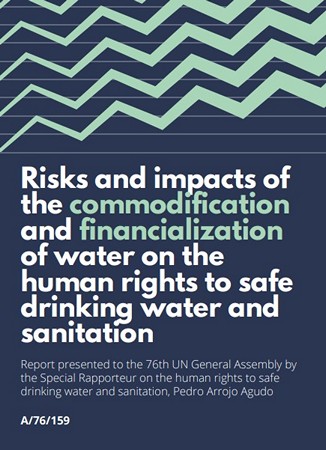Puberty May Start Earlier Than It Used To
Some girls are starting to develop breasts as early as age 6 or 7. Researchers are studying the role of obesity, chemicals and stress.

Credit…Eleni Kalorkoti
June 22, 2024 – Marcia Herman-Giddens first realized something was changing in young girls in the late 1980s, while she was serving as the director for the child abuse team at Duke University Medical Center in Durham, N.C. During evaluations of girls who had been abused, Dr. Herman-Giddens noticed that many of them had started developing breasts at ages as young as 6 or 7 years.
“That did not seem right,” said Dr. Herman-Giddens, who is now an adjunct professor at the University of North Carolina Gillings School of Global Public Health. She wondered whether girls with early breast development were more likely to be sexually abused, but she could not find any data keeping track of puberty onset in girls in the United States. So she decided to collect it herself.
A decade later, she published a study of more than 17,000 girls who underwent physical examinations at pediatricians’ offices across the country. The numbers revealed that, on average, girls in the mid-1990s had started to develop breasts — typically the first sign of puberty — around age 10, more than a year earlier than previously recorded. The decline was even more striking in Black girls, who had begun developing breasts, on average, at age 9.
The medical community was shocked by the findings, and many were doubtful about a dramatic new trend spotted by an unknown physician assistant, Dr. Herman-Giddens recalled. “They were blindsided,” she said.
But the study turned out to be a watershed in the medical understanding of puberty. Studies in the decades since have confirmed, in dozens of countries, that the age of puberty in girls has dropped by about three months per decade since the 1970s. A similar pattern, though less extreme, has been observed in boys.
Although it is difficult to tease apart cause and effect, earlier puberty may have harmful impacts, especially for girls. Girls who go through puberty early are at a higher risk of depression, anxiety, substance abuse and other psychological problems, compared with peers who hit puberty later. Girls who get their periods earlier may also be at a higher risk of developing breast or uterine cancer in adulthood.
No one knows what risk factor — or more likely, what combination of factors — is driving the age decline or why there are stark race- and sex-based differences. Obesity seems to be playing a role, but it cannot fully explain the change. Researchers are also investigating other potential influences, including chemicals found in certain plastics and stress. And for unclear reasons, doctors across the world have reported a rise in early puberty cases during the pandemic.
“We are seeing these marked changes in all our children, and we don’t know how to prevent it if we wanted to,” said Dr. Anders Juul, a pediatric endocrinologist at the University of Copenhagen who has published two recent studies on the phenomenon. “We don’t know what is the cause.”
Obesity
Around the time that Dr. Herman-Giddens published her landmark study, Dr. Juul’s research group examined breast development in a cohort of 1,100 girls in Copenhagen. Unlike the American children, the Danish group matched the pattern long described in medical textbooks: Girls began developing breasts at an average age of 11 years old.
“I was interviewed quite a lot about the U.S. puberty boom, as we called it,” said Dr. Juul. “And I said, ‘it’s not happening in Denmark.’”
At the time, Dr. Juul suggested that the earlier onset of puberty in the United States was probably tied to a rise in childhood obesity, which had not occurred in Denmark.
Obesity has been linked to earlier periods in girls since the 1970s. Numerous studies since have established that girls who are overweight or obese tend to start their periods earlier than girls of average weights do.
In one decades-long study of nearly 1,200 girls in Louisiana published in 2003, childhood obesity was linked to earlier periods: Each standard deviation above the average childhood weight was associated with a doubled chance of having a period before age 12.
And in 2021, researchers from Britain found that leptin, a hormone released by fat cells that limits hunger, acted on a part of the brain that also regulated sexual development. Mice and people with certain genetic mutations in this region experienced later sexual development.
“I don’t think there’s much controversy that obesity is a major contributor to early puberty these days,” said Dr. Natalie Shaw, a pediatric endocrinologist at the National Institute of Environmental Health Sciences who has studied the effects of obesity on puberty.
Still, she added, many girls who develop early are not overweight.
“Obesity can’t explain all of this,” Dr. Shaw said. “It’s just happened too quickly.”
Chemicals
In the decade after the Herman-Giddens study, Dr. Juul began noticing an increase in the number of referrals for early puberty in Copenhagen, mostly of girls who were developing breasts at 7 or 8 years old.
“And then we thought, ‘Is this a real phenomenon?’” Dr. Juul said. Or, he wondered, had parents and doctors become “hysterical” because of the news coverage of Dr. Herman-Giddens’s study?
In a 2009 study of nearly 1,000 school-aged girls in Copenhagen, his team found that the average age of breast development had dropped by a year since his earlier study, to a little under 10, with most girls ranging from 7 to 12 years old. Girls were also getting their periods earlier, around age 13, about four months earlier than what he had reported before.
“That’s a very marked change in a very short period of time,” Dr. Juul said.
But, unlike doctors in the United States, he did not think obesity was to blame: The body mass index of the Danish children in the 2009 cohort was no different than it had been in the 1990s.
Dr. Juul has become one of the most vocal proponents of an alternate theory: that chemical exposures are to blame. The girls with the earliest breast development in his 2009 study, he said, had the highest urine levels of phthalates, substances used to make plastics more durable that are found in everything from vinyl flooring to food packaging.
Phthalates belong to a broader class of chemicals called “endocrine disrupters,” which can affect the behavior of hormones and have become ubiquitous in the environment over the past several decades. But the evidence that they are driving earlier puberty is murky.
In a review article published last month, Dr. Juul and a team of researchers analyzed hundreds of studies looking at endocrine disrupters and their effects on puberty. The methods of the studies varied widely; some were done in boys, others in girls, and they tested for many different chemicals at different ages of exposure. In the end, the analysis included 23 studies that were similar enough to compare, but it was unable to show a clear association between any individual chemical and the age of puberty.
“The big takeaway is that there’s few publications and a paucity of data to explore this question,” said Dr. Russ Hauser, an environmental epidemiologist at the Harvard T.H. Chan School of Public Health and a co-author of the analysis.
That lack of data has led many scientists to be skeptical of the theory, said Dr. Hauser, who recently reported on how endocrine disrupters affect puberty in boys. “We don’t have enough data to build a strong case for a specific class of chemicals.”

Credit…Eleni Kalorkoti
Stress and lifestyle
Other factors may also be involved in earlier puberty, at least in girls. Sexual abuse in early childhood has been linked to earlier puberty onset. Causal arrows are difficult to draw, however. Stress and trauma could prompt earlier development, or, as Dr. Herman-Giddens hypothesized decades ago, girls who physically develop earlier could be more vulnerable to abuse.
Girls whose mothers have a history of mood disorders also seem more likely to reach puberty early, as are girls who do not live with their biological fathers. Lifestyle factors like a lack of physical activity have also been linked to changes in pubertal timing.
And during the pandemic, pediatric endocrinologists from across the world noticed that referrals were increasing for earlier puberty in girls. A study published in Italy in February showed that 328 girls were referred to five clinics across the country during a seven month period in 2020, compared with 140 during the same period in 2019. (No difference was found in boys.) Anecdotally, the same thing might be happening in India, Turkey and the United States.
“I’ve asked my colleagues around the country and a number of them are saying, yes, we’re seeing a similar trend,” said Dr. Paul Kaplowitz, a professor emeritus of pediatrics at Children’s National Hospital in Washington. It’s unclear whether the trend was caused by increased stress, a more sedentary lifestyle or parents being in close enough quarters with their children to notice early changes.
Several factors are most likely contributing at once. And many of these issues disproportionately impact lower-income families, which may partly explain the racial differences in puberty onset in the United States, the researchers said.
Извор: WUNRN – 02.07.2024



